Excellent publications to date
Excellent publications to date
With a scientific publication, also called a paper, scientists publish their own research topic in writing in specialist journals in order to share their research openly and verifiably with other colleagues. With the "Hermine Heusler-Edenhuizen Prize", the School VI Medicine and Health Sciences recognises outstanding work by its young researchers.
For this purpose, the applicants prepare the newly gained knowledge in a concise and comprehensible application and submit it to . A committee of the School VI School of Medicine and Health Sciences selects the winner from all submitted applications and publications.
The prize is donated by the Friends and Sponsors of the University Medicine Northwest e.V.
Hermine Heusler-Edenhuizen Prize - WiSe 2022/2023
Natalie Gray
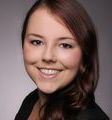
Title of publication: "Differential Upregulation and Functional Activity of S1PR1 in Human Peripheral Blood Basophils of Atopic Patients". Authors: Natalie Gray, Maren M. Limberg, Daniela Wiebe, Tobias Weihrauch, Anna Langner, Nicola Brandt, Anja U. Bräuer and Ulrike Raap.
Division, Department or University Hospital: Department for Human Medicine, Division of Experimental Allergology and Imundermatology and Division of Anatomy
Journal: https://pubmed.ncbi.nlm.nih.gov/36555755
Summary of background, research question and significance of the publication: Basophilic granulocytes are important effector cells in allergic diseases such as atopic dermatitis (AD), as they recognise allergens by receptor-bound IgE antibodies, which triggers degranulation of these cells. This releases proinflammatory cytokines that initiate the inflammatory cascade and recruit other immune cells such as eosinophil granulocytes and T cells. Sphigosine-1-phosphate (S1P) is a lipid mediator that binds to five different S1P receptors (S1PR), and their signalling cascade plays an important role in various biological processes.
Elevated S1P levels have been observed in both AD and allergic asthma, so we wanted to explore the interplay between basophils, which are important in these diseases, and lipid S1P. This paper is the first publication to investigate the interaction between basophils and S1P. We were the first research team to show that basophils express four S1P receptors, and thus can interact with S1P. We were also able to show that the stimulation of basophils with different concentrations of S1P influences both the lifespan and the chemotactic migration of the cells. The pathological concentration of 10 µM promotes cell apoptosis and basophils from atopic patients respond with a reduced level of cell migration. This could be related to the observed lower protein expression of S1PR1. These results suggest that the increased S1P levels in atopic disease, limits the number of basophils, thus counteracting an exacerbation of the local inflammatory response. This opens up a new perspective on the role of S1P in atopic diseases. Previously, this lipid was thought to be more pro-inflammatory, but it also appears to have an anti-inflammatory effect by limiting basophils. In addition, we demonstrated for the first time that basophils in the tissue of an AD patient possess intracellular S1P. When released, this could influence the number and survival of basophils through self-regulatory mechanisms. Further research is needed as this could be an interesting new aspect of atopic pathogenesis.
About the award winner: Natalie Gray, born on 15 February 1995, has been employed as a doctoral student and research assistant in the departments of "Experimental Allergology and Immunodermatology" and "Anatomy" since February 2020. There she is researching the interaction between sphingosine-1-phosphate and basophilic granulocytes. Previously, she completed her Master's degree in "Molecular Medicine" at Trinity College in Dublin.
Hermine Heusler-Edenhuizen Prize - SoSe 2022:
Anna Brinkmann

Publication title: "Providing physical relief for nurses by collaborative robotics" Authors: Anna Brinkmann, Conrad Fifelski-von Böhlen, Christian Kowalski, Sandra Lau, Ole Meyer, Rebecca Diekmann, Andreas Hein Department or University Hospital: Division of Assistance Systems and Medical Technology, Department of Health Services Research, Department of Geriatrics, Division of Health Services Research
Journal: https://doi.org/10.1038/s41598-022-12632-4
Summary of background, research question and significance of the publication: Employees in nursing professions are exposed to above-average psychological and physical work demands, which can lead to musculoskeletal complaints and degenerative musculoskeletal diseases. The consequences are occupation-specific incapacity to work and an exit from the occupation before retirement age. These factors have a serious influence on the prevailing discrepancy between the acute shortage of skilled workers and the increasing number of people in need of care - caused by demographic change and COVID-19.
Repositioning processes in the nursing bed are among the physical health risks of everyday nursing care, which are carried out every two to three hours - often without taking ergonomic practices or the use of aids into account. New approaches and technologies for physical relief are urgently needed to improve the prevailing working conditions. Collaborative robotic systems represent a way to adaptively support conventional work processes based on sensory perception of the environment.
Our work is the first experimental study worldwide to quantify the potential of collaborative robotics to physically relieve caregivers. In the nursing laboratory of the University of Oldenburg, a patient simulation manikin (80 kg) was moved from the supine to the lateral position in the nursing bed - due to ethical and technical requirements. The repositioning was carried out through the targeted collaboration of the nursing staff with the robotic system. A measurement and analysis system recorded the movement and muscle activity data of the caregivers in order to derive the preparation and interaction strategies in the care process and to quantify the relief potential. The use of the robotic system reduced the maximum effort in the care process by up to 51 %. Strongly asymmetric postures and movements during repositioning corresponded with pronounced maxima in the muscle activity data of the lower limbs and spine and were reduced by up to 87 %. This resulted in a significant reduction in average muscle activity in the spine (55%).
In summary, the work presented demonstrates for the first time the feasibility of robotic patient handling and lays the foundation for future research. It underlines the need for interdisciplinary research to analyse the sensory environment perception of the robotic system in order to adaptively respond to the individual needs and functional abilities of the caregivers.
About the award winner: Anna Brinkmann studied Medical Technology (B.Sc.) and Human Technology in Sports and Medicine (M.Sc.) in Bremerhaven, Cologne and Istanbul. She is a staff member of the Department of Assistance Systems and Medical Technology at the University of Oldenburg and defended her dissertation "Biomechanical analysis of nursing tasks for physical relief by collaborative robotics" on 23.09.2022 (Dr. rer. nat.).
Hermine Heusler-Edenhuizen Prize - WiSe 2021/2022:
Dr Janina Noster
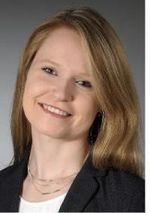
Title of publication: "Bloodstream Infections Caused by Magnusiomyces capitatus and Magnusiomyces clavatus: Epidemio-logical, Clinical, and Microbiological Features of Two Emerging Yeast Species" Authors: Janina Noster, Martin B. Koppel, Marie Desnos-Olivier, Maria Aigner, Karl Dichtl, Stephan Haettig, Andrea Kurzai, Arthur B. Pranada. Koeppel, Marie Desnos-Olivier, Maria Aigner, Oliver Bader, Karl Dichtl, Stephan Göttig, Andrea Haas, Oliver Kurzai, Arthur B. Pranada, Yvonne Stelzer, Grit Walther, Axel Hamprecht
Division, Department or University Hospital: University Institute of Medical Microbiology and Virology, Department for Human Medicine
Journal: Antimicrobial agents and chemotherapy (2021), Vol. 66 No. 2, AAC-01834
Abstract on background, research question and significance of the publication: Bloodstream infections with rare yeasts such as Magnusiomyces spp. (former), represent a major challenge in diagnostics and therapy. The differentiation of the two most common species Mag-nusiomyces clavatus and Magnusiomyces capitatus with the biochemical methods used so far is not possible, the true epidemiology of these infections is unknown. Due to intrinsic resistance to many antifungal drugs (e.g. echinocandins), mortality from infections with these pathogens remains very high, despite modern antifungal chemotherapies. To date, there has been little work on the epidemiology and antifungal susceptibility of these pathogens using referencing methods for identification and resistance testing.
In our work, we collected isolates from a total of 34 bloodstream infections with M. clavatus and M. capitatus from seven institutions in Germany and Austria, covering a period of almost 20 years. Thanks to molecular and mass spectrometric identification methods, we were able to show that infections in Germany were much more frequently caused by M. clavatus, in contrast to most previously published data, which were not obtained using molecular biological reference methods. A large proportion of the infections (79%) in our study occurred in patients with underlying haemato-oncological diseases. We evaluated the susceptibility of these isolates to eight different antifungal agents using the gold standard method of broth microdilution; voriconazole and posaconazole showed the best in vitro efficacy. We also compared these results with the frequently used gradient tests, which showed unacceptable agreement with the reference method. Furthermore, we were able to establish methods with which smaller laboratories without molecular biological equipment or mass spectrometry can reliably distinguish between M. capitatus and M. clavatus . In summary, the presented work represents the most comprehensive study on Magnusiomyces spp. in bloodstream infections. Our work contributes to the understanding of the epidemiology of these rare pathogens and provides both clinicians and laboratories with important information for the therapy and diagnosis of these emerging pathogens.
About the award winner: Dr Janina Noster took over as head of the research laboratories in Prof Hamprecht's Department of Medical Microbiology and Virology in July 2020. Her research focuses on analyses of the expression of antibiotic resistance genes. She did her doctorate in the Department of Microbiology at the University of Osnabrück on the interplay of metabolism and virulence in Salmonella enterica.
Hermine Heusler-Edenhuizen Prize - SoSe 2021:
Dr. rer. nat. Sonja Mertsch
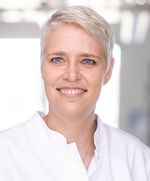
Publication title: "The effect of Rho Kinase inhibition on corneal nerve regeneration in vitro and in vivo" Authors: Sonja Mertsch, Inga Neumann, Cosima Rose, Marc Schargus, Gerd Geerling, Stefan Schrader
Division, Department or University Hospital: University Hospital of Ophthalmology, Department for Human Medicine
Journal: The Ocular Surface, Aug 2021, in press, available online 19 August 2021 doi: 10.1016/j.jtos.2021.08.011; IF 12.336 (2019)
Summary of background, research question and significance of the publication: Neurotrophic keratopathy (NK) is a degenerative corneal disease based on decreased innervation of the cornea. Underlying causes are diverse and range from viral infectious diseases (e.g. herpes keratitis), neurosurgical interventions, surgical procedures on the cornea to systemic diseases such as diabetes mellitus. Despite a basic regeneration potential of peripheral nerve fibres, sufficient re-innervation of the cornea rarely occurs, which can often lead to persistent corneal ulcers and in severe cases to blindness. The focus of symptomatic therapies to date has been intensive surface wetting and covering with amniotic membrane. Since 2017, a curative therapy option has been available for the first time with rNGF. However, this is only used in the most severe cases due to the high costs (approx. 14,000€). The understanding of the underlying mechanisms of NK is still incomplete and the need for alternative curative therapies is very high.
In this publication, we demonstrated for the first time the positive influence of Rho kinase (ROCK) inhibition on the regeneration of damaged corneal nerves in vitro and in vivo. A novel 3D cornea model was established, which provides an in vivo-like environment for the neurons. The results were comparable to those of conventional 2D experiments and in vivo experiments. In addition, a time course of nerve regeneration over 28 days in the same animals could be followed in the living animal using confocal microscopy (HRT-III). In addition to the functional analyses, signalling pathways were also investigated using qrtPCR to uncover underlying mechanisms of increased regeneration.
In summary, in this publication we established a new 3D model for nerve regeneration, as well as confocal microscopy in a mouse model, and were able to demonstrate the regenerative effect of ROCK inhibitor on damaged nerve fibres. This is a clinically very promising approach for a novel curative therapy of NK and additionally particularly relevant as already approved ROCK inhibitors (Ripasudil, Netarsudil) exist in Japan and the USA for the treatment of glaucoma, which significantly simplifies a possible clinical translation of the project.
About the award winner: Dr. Sonja Mertsch has been head of the Laboratory for Experimental Ophthalmology at the University Hospital for Ophthalmology in Oldenburg since December 2018. Her research focuses on corneal nerve regeneration and the reconstruction and regeneration of ocular surfaces and adnexa. Dr Sonja Mertsch studied biology at the WWU Münster and did her doctorate at the Institute for Neuropathology Münster on molecular mechanisms of tumour cell migration.
Hermine Heusler-Edenhuizen Prize - WiSe 2020/2021:
Daniel Hölle and Juan Felipe Quiñones Sánchez
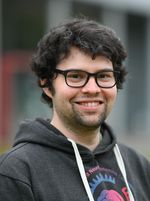

Daniel Hölle
Publication title: "Mobile ear-EEG to study auditory attention in everyday life" Authors: Daniel Hölle, Joost Meekes, Martin G. Bleichner
Division, Department or University Hospital: Neurophysiology of Everyday Life (Emmy Noether Group), Department of Psychology
Journal: Behavior Research Methods (2021), Volume & Pages TBD
Summary of background, research question and significance of the publication: The majority of neurological studies on auditory perception take place in controlled laboratory conditions. However, the extent to which these research results can be transferred to complex everyday situations is unclear. Our study was the first to record electrophysiological activity of subjects for a duration of 6 hours in everyday life. Our goal was to show that such long-term recordings are technically possible and that the resulting data can be interpreted. For this purpose, we built a prototype that allows to record electrophysiological activity at the ear and simultaneously present sounds via headphones worn around the neck. For recording and sound presentation, we used a smartphone worn on the arm. Our subjects processed a familiar auditory paradigm (oddball experiment) for the entire duration of the experiment while performing their normal office work. The subjects were free to move around, e.g. go to the canteen and eat, drink coffee or talk to colleagues. In these everyday recordings, we were able to measure the expected brain responses and thus demonstrate the feasibility of such recordings. So far, no comparable study has conducted such long-term recordings with minimal experimental control in everyday life. This work is a crucial step for further studies in everyday life, allowing us to explore neurophysiological principles outside the laboratory.
About the award winner: Daniel Hölle is a doctoral student in the "Neurophysiology of Everyday Life" group in the Department of Psychology Oldenburg. His research focuses on noise sensitivity and noise processing in everyday life.
Juan Felipe Quiñones Sánchez
Publication title: "Nature and nurture shape structural connectivity in the face processing brain network" Authors: Juan Felipe Quiñones Sánchez, Dr. Xinyang Liu (until february 2021), Dr. Changsong Zhou, Prof. Dr. Andrea Hildebrandt
Department, Division or University Hospital: Department of Psychology, Psychological Methods and Statistics
Journal: NeuroImage, 2021,229, 117736
Summary of background, research question and significance of the publication: The published article is the result of a research project investigating the environmental and genetic contributions to structural connectivity among face-processing areas in the brain. The ontogeny of face processing abilities has been a subject of debate among researchers who have claimed environmental or genetic prevalence. Both at the behavioural and functional levels, several studies have addressed this topic and yielded heterogeneous results. Our main goal was to build up on this debate by assessing how nature and nurture contribute to fractional anisotropy in the structural pathways linking a well-documented set of face-processing areas in the brain. To do so, we made use of probabilistic tractography and structural equation models for twin data. Our results indicate that though small, there are significant genetic effects that account for individual differences in the structural face network. We further highlight that such effects are exclusive for the structural face network and thus, additional to well-studied genetic effects for general white matter. High uniqueness estimates resulting from statistical modelling emphasise the importance of individual-specific effects including measurement error. Ultimately, our findings are of great relevance, as they: 1. For the first time address the ontogenetic factors responsible for the structural basis of the face processing network. 2. identify significant genetic effects specific to this subsystem. 3. provide statistical background for further studies exploring the components of unique effects. The reported findings additionally entail great methodological achievements, namely a very large sample size for neuroimaging studies and two different methods for the definition of regions of interest for further fibre tract reconstruction.
About the award winner: Juan Felipe Quiñones Sánchez studied psychology in Bogota, Colombia, and later enrolled in the Master's programme in Neurocognitive Psychology at the University of Oldenburg, which led to the submitted publication. He is currently a doctoral candidate in the Department of Psychology's Psychological Methodology and Statistics Unit.
Hermine Heusler Edenhuizen Prize - SoSe 2020:
Anne Gläser

Title of publication: "Identification of Brain-Specific Treatment Effects in NPC1 Disease by Focusing on Cellular and Molecular Changes of Sphingosine-1-Phosphate Metabolism" Authors: Anne Gläser, Franziska Hammerl, Markus H. Gräler, Sina M. Coldeway, Christin Völker, and others.
Division, Department or University Hospital: Division of Anatomy, Department for Human Medicine
Journal: International Journal of Molecular Sciences, Year: 2020, Volume: 21
Summary of background, research question and significance of the publication: Niemann-Pick type C1 (NPC1) is a lysosomal storage disorder, inherited as an autosomal-recessive trait. Mutations in the Npc1 gene result in malfunction of the NPC1 protein, leading to an accumulation of unesterified cholesterol and glycosphingolipids. Beside visceral symptoms like hepatosplenomegaly, severe neurological symptoms such as ataxia occur. Here, we analysed the sphingosine-1-phosphate (S1P)/S1P receptor (S1PR) axis in different brain regions of Npc1-/- mice and evaluated specific effects of treatment with 2-hydroxypropyl-β-cyclodextrin (HPβCD) together with the iminosugar miglustat. Using high-performance thin-layer chromatography (HPTLC), mass spectrometry, quantitative real-time PCR (qRT-PCR) and western blot analyses, we studied lipid metabolism in an NPC1 mouse model and human skin fibroblasts. Lipid analyses showed disrupted S1P metabolism in Npc1-/- mice in all brain regions, together with distinct changes in S1pr3/S1PR3 and S1pr5/S1PR5 expression. Brains of Npc1-/- mice showed only weak treatment effects. However, side effects of the treatment were observed in Npc1+/+ mice. The S1P/S1PR axis seems to be involved in NPC1 pathology, showing only weak treatment effects in mouse brain. S1pr expression appears to be affected in human fibroblasts, induced pluripotent stem cells (iPSCs)-derived neural progenitor, and neuronal differentiated cells. Nevertheless, treatment-induced side effects make examination of further treatment strategies indispensable.
About the award winner: Anne Gläser is a doctoral student at the University of Oldenburg in the Department of Anatomy. She is working on the analysis of tissue-specific treatment effects in the lysosomal lipid storage disease Niemann-Pick type C1. She is currently completing her doctoral thesis and would like to remain active in the field of research.
Hermine Heusler-Edenhuizen Prize - WiSe 2019/2020:
Dr. Florian Kasten
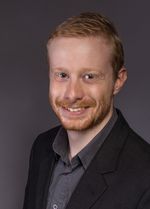
Publication title: "Integrating electric field modelling and neuroimaging to explain inter-individual variability of tACS effects" Authors: Kasten Florian, H; Duecker, Katharina; Maack, Marike C; Meiser Arnd; Herrmann, Christoph S.
Department or University Hospital: Division of General Psychology, Department of Psychology
Journal: Nature Communications, 2019, 10, 1-11
Summary of background, research question and significance of the publication: Non-invasive transcranial brain stimulation using direct or alternating current stimulation (tDCS/tACS) has many potential applications for future therapy of neurological and psychiatric diseases as well as for basic neuroscientific research. transcranial direct/alternating current stimulation, tDCS/tACS) offers a wide range of potential applications for the future treatment of neurological and psychiatric diseases, as well as for basic neuroscientific research. For example, tACS can influence the frequency and amplitude of brain oscillations. However, in the past the effects turned out to be relatively weak and variable. Some critics question the efficacy of the procedure in general and suspect peripheral physiological mechanisms behind the stimulation effects (e.g. stimulation of retinal or cutaneous nerve cells).The paper presented here investigated the extent to which the strength of tACS effects can be predicted by differences in brain anatomy and resulting differences in the electric fields induced in the brain. The results indicate that a considerable proportion of the variability of the stimulation effect can be explained by these inter-individual differences and provide important insights for the future application of the technique. For example, the presence of a dose correlation between the electric field in the brain and the stimulation effect is evidence that the mechanisms of action of the procedure are located in the brain and do not result from peripheral physiological mechanisms. Furthermore, the results suggest that the effectiveness of stimulation can be significantly increased by individualised stimulation protocols, from which therapeutic application in particular would benefit. Finally, the paper presents a new approach to evaluating the effects of electrical brain stimulation. These are often investigated with simple comparisons of means. However, such statistical models are subject to the implicit assumption that the stimulation produces relatively consistent effects across all subjects. A test for the presence of dose-response, on the other hand, explicitly includes the possibility that some individuals will show weaker or no effects if the stimulation protocol chosen is inappropriate. In addition, such effect correlations are more difficult to reconcile with alternative explanations such as placebo effects, so the model better controls for such confounding.
About the award winner: Dr. Florian H. Kasten studied the international Master's programme "Neurocognitive Psychology" at the University of Oldenburg and received his doctorate in psychology on physiological and behavioural effects of transcranial alternating current stimulation. He is currently working as a post-doc in the Department of General Psychology.
Hermine Heusler-Edenhuizen Prize - SoSe 2019:
Saskia Breuel

Publication title: "Combining Engineered U1 snRNA and Antisense Oligonucleotides to Improve the Treatment of a BBS1 Splice Site Mutation." Authors: Saskia Breuel, Mariann Vorm, Anja U. Bräuer, Marta Owczarek-Lipska and John Neidhardt
Department, Division or University Hospital: Division of Human Genetics, Department for Human Medicine
Journal: Molecular Therapy Nucleic Acids, 2019, vol. 18, pp. 123-130
Abstract on background, research question and significance of the publication: Retinal degenerations (RD) are rare hereditary diseases that often lead to blindness due to the progressive loss of photoreceptors, thereby impairing the patient's quality of life. Worldwide, RD affects approximately 1 in 3000 individuals and causes enormous socio-economic problems. Therapeutic treatment options are rarely available due to genetic heterogeneity or show only marginal efficient effects. Therefore, the development of new therapeutic approaches is urgently needed. For example, they studied a family in which one member was affected by the disease retinitis pigmentosa, which belongs to the group of retinal degenerations. On a molecular level, the disease is caused by a mutation that leads to an altered splicing pattern of the gene transcript. As a result, the amount of normal gene product is insufficient for the maintenance and function of the photoreceptors and they die over time. In their paper "Combining engineered U1 snRNA and antisense oligonucleotides to improve the treatment of a BBS1 splice site mutation", using patient-derived fibroblasts, they developed a new, first-of-its-kind therapeutic approach to manage the deleterious effects of the mutation. They combined two techniques, both of which increased the amount of correctly spliced transcript, thereby synergistically improving the therapeutic effect. This combination therapy is significantly more efficient than a technique previously published by the Human Genetics Division of the School of Medicine and Health Science at the University of Oldenburg. With their results, they were also able to show that this new therapeutic approach does not cause an increase in cell death in the treated patient cells and thus has a high level of safety.
About the award winner: Saskia Breuel is a biology student at the Carl von Ossietzky University of Oldenburg and completed her Master's thesis in the Department of Human Genetics at Faculty VI on "Gene therapy correction of mutation-induced BBS1 splicing defects using AONs and mutation-adapted U1 snRNA" with a 1.0. She completed her bachelor's thesis in the Department of Neurogenetics.
Hermine Heusler-Edenhuizen Prize - WiSe 2018/2019:
Christian Lins

Publication title: "Cardiopulmonary resuscitation quality parameters from motion capture data using Differential Evolution fitting of sinusoids" Authors: Christian Lins, Daniel Eckhoff, Andreas Klausen, Sandra Hellmers, Andreas Hein and Sebastian Fudickar
Department or University Hospital: Division of Assistance Systems and Medical Technology, Department of Health Services Research
Journal: Applied Soft Computing, June 2019, Page 300 to 309
Abstract on background, research question and significance of the publication: Cardiopulmonary resuscitation (CPR) is an important countermeasure when people suffer a sudden heart attack/stroke. First aid is usually initially provided by medical laypersons, therefore a broad knowledge of CPR in the population is crucial. High-quality CPR can only be achieved with regular training, for which technical aids are also used. This paper describes a robust and new approach for novel training devices for cardiopulmonary resuscitation. While previous training devices are mostly stationary and physically heavy training mannequins, the approach described in this paper uses a mobile RGB-D camera (such as the Microsoft Kinect) that enables the capture of the complete scenery. External measurements, as in our approach, can evaluate the scene and the behaviour of the actors, especially for training professional rescuers. But also for the training of lay people, external systems can include additional observations in the quality assessments, such as the posture of the trainee's upper body and arms in CPR, which has a significant impact on the trainee's endurance and fatigue. Our method continuously adapts the movement data to a sinus model, which can then derive heart pressure frequency and indentation depth. In a first step, we evaluated the detection of these most important quality factors of cardiac massage based on motion data from the Kinect sensor. We were able to show that the approach is feasible and that the observed compression frequency deviates only minimally from the gold standard. With these results, cost-effective CPR training devices can now be developed for widespread use. In particular, regions without adequate training facilities could benefit from viable, low-cost training technologies. With the increasing prevalence of AI hardware in smartphones, it is also possible to integrate our method into future smartphones as an app. The smartphone thus becomes a personal resuscitation training device. Integration into defibrillators is also conceivable; an integrated camera could observe CPR and provide acoustic cues. This would also make it possible to support a rescuer in real-life situations.
About the award winner: Christian Lins studied Media Informatics and Computing Science at Osnabrück University of Applied Sciences (degrees: Dipl.-Inf. (FH) in 2009, M.Sc. in 2012) and has been a doctoral candidate at the OFFIS Institute and the Department of Assistance Systems and Medical Technology since 2013. He is working on evolutionary optimisation of classification models as part of his doctoral thesis. He is also involved in the university's doctoral students' representation.
Hermine Heusler-Edenhuizen Prize - SoSe 2018:
Dr Stephanie Rosemann

Title of publication: "Audio-visual speech in age-related hearing loss: Stronger integration and increased frontal lobe recruitment" Authors: Dr. Stephanie Rosemann and Prof. Dr. Christiane M. Thiel
Department, Division or University Hospital: Biological Psychology, Department of Psychology
Journal: NeuroImage, 2018, 175, pp. 425-437
Summary of background, research question and significance of the publication: A natural consequence of ageing is hearing impairment, which predominantly affects the high frequencies. This hearing loss impairs the perception of speech, especially under difficult conditions, for example due to background noise. However, in everyday life we have additional visual information that can improve speech perception, for example lip reading. Previous research has shown that hearing impairment in old age leads to changes in auditory perception and even neural changes in the auditory cortex. The extent to which hearing loss affects the processing of audio-visual speech is not yet known. Therefore, in this study we investigated the influence of age-related untreated hearing impairment on audio-visual speech perception using functional magnetic resonance imaging (fMRI). This is the first fMRI study to investigate audio-visual speech perception in mild to moderate hearing impairment in old age. We were able to show that hearing-impaired subjects exhibit stronger audio-visual integration and that they show additional activation of the frontal cortex for processing difficult speech stimuli. This is presumably related to the increased effort that these subjects expend to solve the task. It is also interesting to note that these changes are significantly related to the severity of the hearing loss, i.e. more severe hearing loss leads to greater integration and activation of the frontal cortex. Thus, we show for the first time that even mild to moderate hearing loss leads to changes in the perception and neural processing of audio-visual speech and that these changes are related to the severity of hearing loss. From a clinical perspective, these findings are highly relevant, as these changes can influence the fitting of a hearing aid. In addition, hearing loss plays a major role in our ageing society - over 40% of adults over 65 are affected by hearing impairment (von Gablenz & Holube, 2015).
About the award winner: In her doctorate at the University of Bremen, she dealt with auditory and visual disorders that occur after a stroke. Since 2016, Stephanie Rosemann has been a PostDoc in the Department of Biological Psychology at the University of Oldenburg. Here, her research focuses on neuronal changes in hearing impairments in old age.


